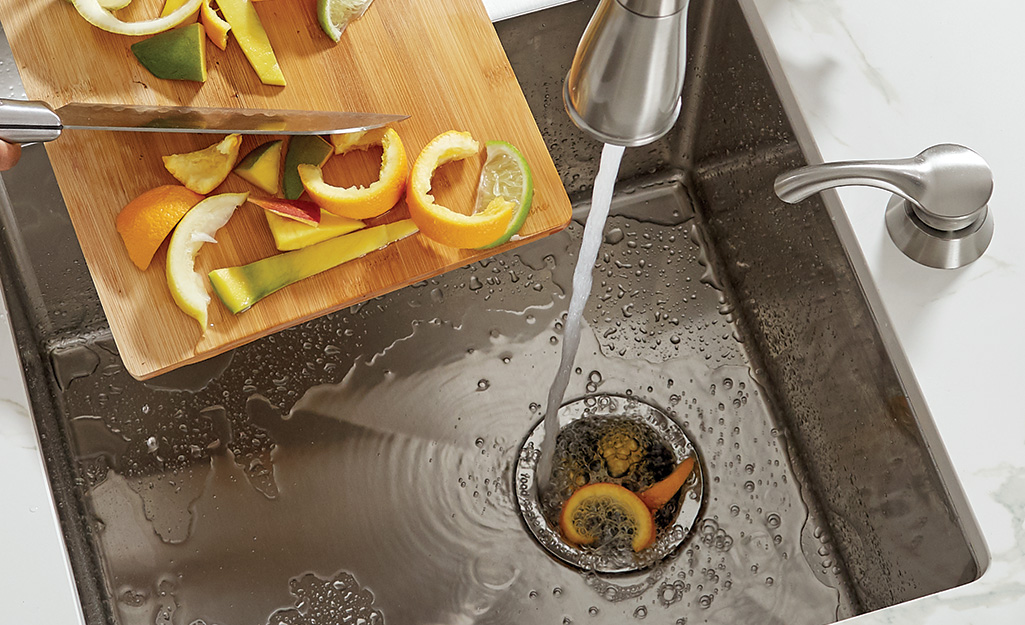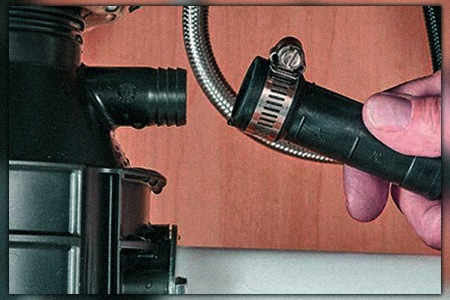Straightforward Instructions for Repairing a Leaky Waste Disposal
Straightforward Instructions for Repairing a Leaky Waste Disposal
Blog Article
The content following next pertaining to Garbage Disposal Leaking From Bottom is absolutely informative. Check it out for yourself and figure out what you think of it.

Waste disposal unit are vital kitchen area appliances that aid in getting rid of food waste effectively. Nonetheless, a leaking garbage disposal can be an aggravating and untidy issue to deal with. Luckily, many leakages can be taken care of easily with a couple of basic steps. In this article, we will go over just how to take care of a dripping waste disposal unit effectively.
Intro
Garbage disposals are installed under kitchen area sinks and are made to shred food waste right into smaller sized pieces, enabling it to travel through the plumbing system conveniently. While these tools are typically trustworthy, leaks can happen in time due to deterioration, loose links, or damages to the unit.
Step-by-Step Overview to Repairing a Dripping Garbage Disposal
Turn Off the Power
Before trying any type of repair work, make certain that the power to the garbage disposal system is turned off to prevent the threat of electric shock.
Locate the Leakage
Identify the exact area of the leak and identify the cause
Tighten up Connections
Use a wrench to tighten any loosened links between the disposal unit and the plumbing system.
Change Seals or Gaskets
If the leakage is due to used seals or gaskets, remove the old elements and change them with brand-new ones.
Patching Fractures or Holes
For fractures or holes in the disposal unit, use epoxy or an ideal patching product to seal the damaged location.
Identifying the Resource of the Leakage
Prior to trying to deal with a leaking garbage disposal, it is important to identify the source of the leakage. This can normally be done via aesthetic examination or by conducting easy tests.
Visual Examination
Check the garbage disposal unit very carefully for any kind of signs of water leak. Pay attention to areas around seals, gaskets, and link points.
Evaluating for Leakages
One way to check for leaks is by running water via the disposal unit and looking for any kind of visible signs of leak.
Usual Causes of Leakages in Rubbish Disposals
Worn Seals and Gaskets
Seals and gaskets play an essential function in stopping water from dripping out of the waste disposal unit. Gradually, these parts can wear away, bring about leakages around the disposal system.
Loose Connections
The links in between the waste disposal unit and the pipes system can end up being loose with time, causing water to leak out throughout procedure.
Splits or Holes in the Disposal System
Physical damage to the garbage disposal, such as fractures or holes in the housing, can also result in leakages.
Devices and Materials Needed for Repairing a Dripping Garbage Disposal
Before starting the fixing procedure, collect the essential devices and products, consisting of a screwdriver, adjustable wrench, plumber's putty, replacement seals or gaskets, and epoxy or patching material for repairing splits or openings.
Testing the Garbage Disposal After Repair Service
Once the repair work is total, check the waste disposal unit by running water with it to guarantee that the leak has actually been dealt with.
Preventive Upkeep Tips to Stay Clear Of Future Leaks
To stop future leaks, it is essential to carry out normal maintenance on your garbage disposal. This includes keeping it tidy, avoiding placing non-food items or hard items down the disposal, and periodically looking for leaks or other problems.
Verdict
Finally, fixing a dripping waste disposal unit is a relatively simple process that can be finished with basic devices and products. By complying with the steps described in this short article and practicing preventative upkeep, you can keep your waste disposal unit in good working problem and avoid pricey repairs in the future.
HERE’S HOW TO FIX YOUR GARBAGE DISPOSAL
WHAT TO DO IF SOMETHING IS STUCK IN YOUR GARBAGE DISPOSAL
If the impeller won’t turn, there’s probably something stuck in the disposal. It could be a steak bone or peach pit, although plumbers report pulling all sorts of inappropriate objects out of disposals, such as bottle caps or aluminum foil. Make sure power to the disposal is off, and look inside to see if you can see the source of the jam.
Never stick your fingers in a disposal. Pull out anything you see with tongs or pliers.
If the disposal still won’t work, it may be time to call a plumber or consider buying a new disposal. GEM Plumbing & Heating is here for all of your garbage disposal needs.
WHAT TO DO IF YOUR GARBAGE DISPOSAL DRAIN IS CLOGGED
Take everything out from underneath your sink and put a bucket or other container under your disposal to catch any water that drains out. Disconnect your disposal from the power supply. If it’s plugged into a wall outlet, unplug it. If it’s hardwired into an electrical box, go to the electrical panel and turn off the breaker for the disposal. Pour ¼ cup of baking soda into the drain, followed by ½ cup of white vinegar. Give the solution a few minutes to fizz and do its work. Look into the disposal with a flashlight to see if you can see an object that might be causing the clog. If you see it, remove it using tongs or pliers. MORE TIPS ON DEALING WITH A CLOGGED GARBAGE DISPOSAL
Never use drain cleaner in a garbage disposal. It can damage the plastic parts inside the disposal. You can also be splashed with the caustic liquid while working to clear the clog. Beware! Never stick your fingers into a garbage disposal. Trust us — not a good idea. In many instances, your dishwasher drains through your garbage disposal. This allows the disposal to grind any large food particles that may be drained out of your dishwasher. There are some jurisdictions, however, where the plumbing code prohibits such a connection. WHAT TO DO WHEN YOUR DISHWASHER DRAINS THROUGH THE DISPOSAL
Run some water in the sink so your plunger has at least a ½-inch of water to create a seal and plunge vigorously up and down several times. You may need to repeat this several times. Run hot water down the drain to clear any residue that remains.

Do you really like more info about Why Is ? Create a comment down below. We will be glad to find out your responses about this blog. In hopes to see you back again in the future. Sharing is nice. You just don't know, you will be helping someone out. Thank you so much for taking the time to read it.
Book Services Report this page